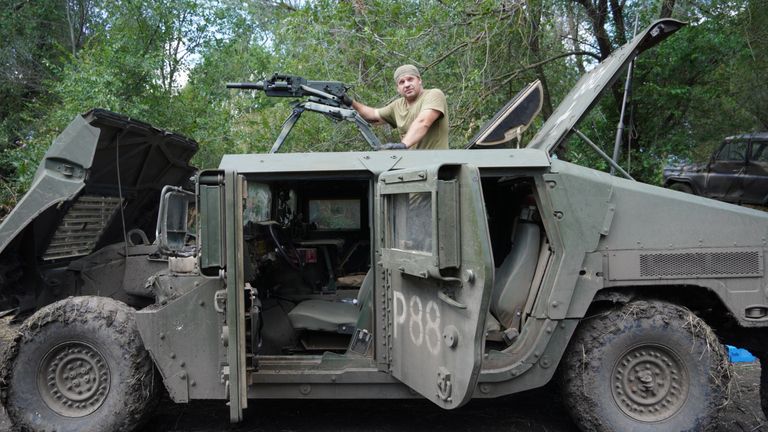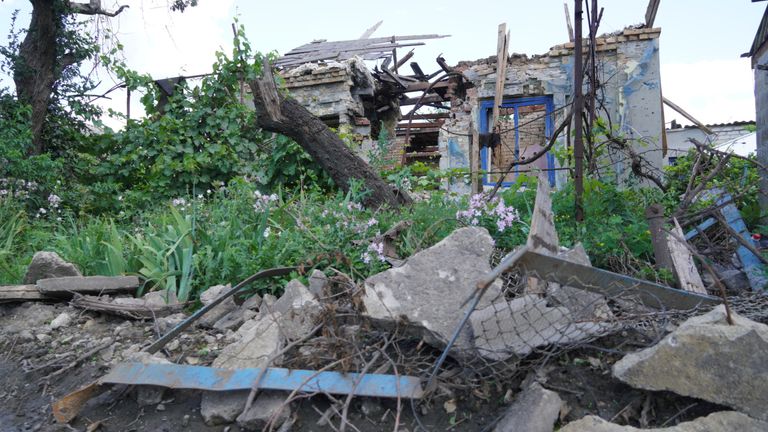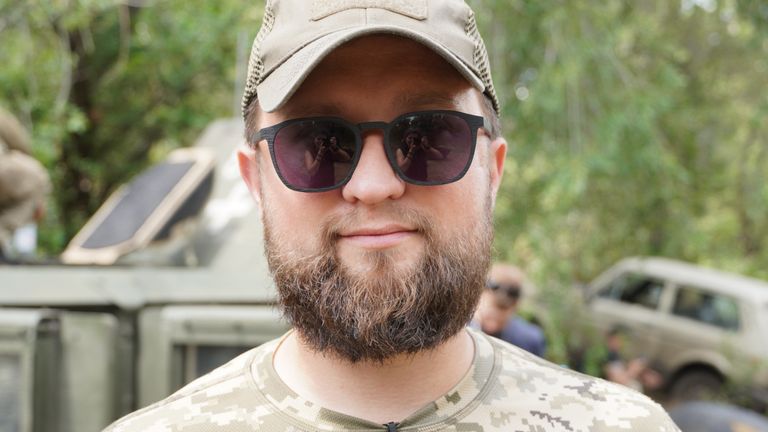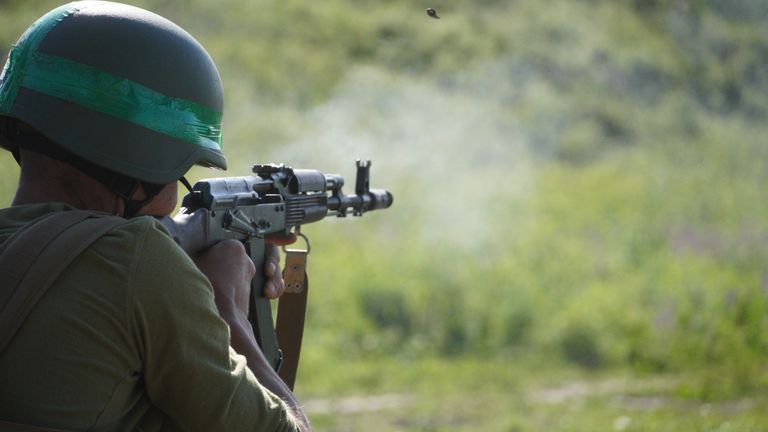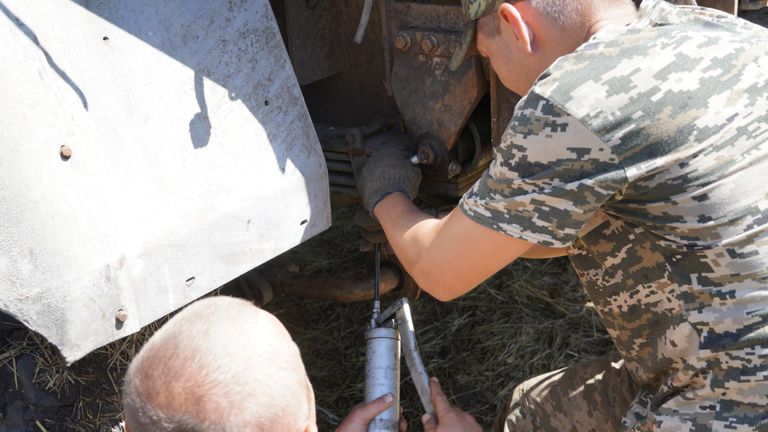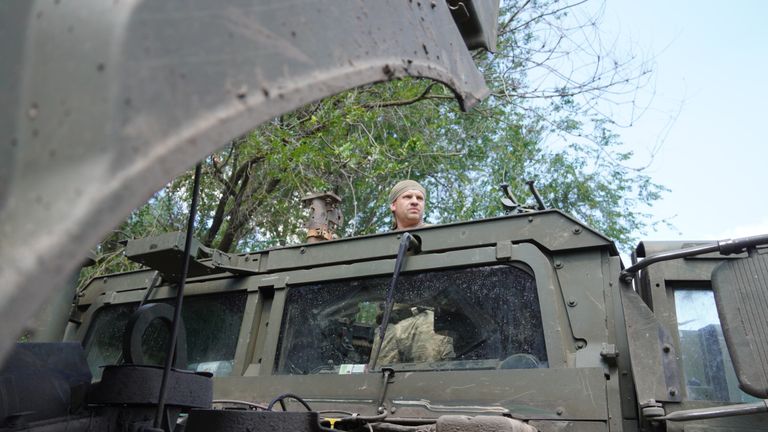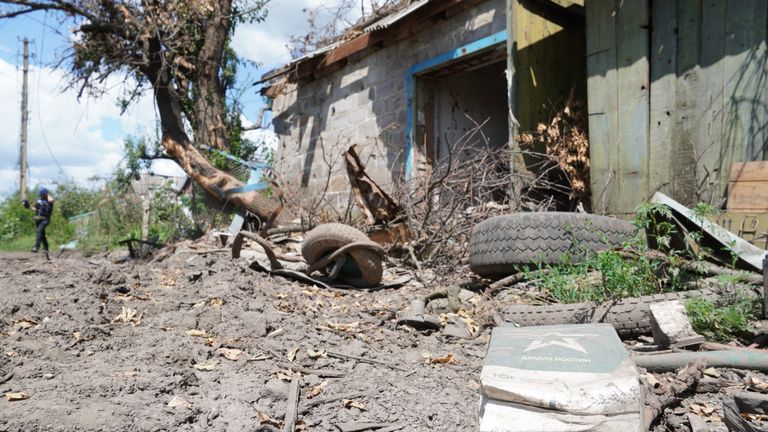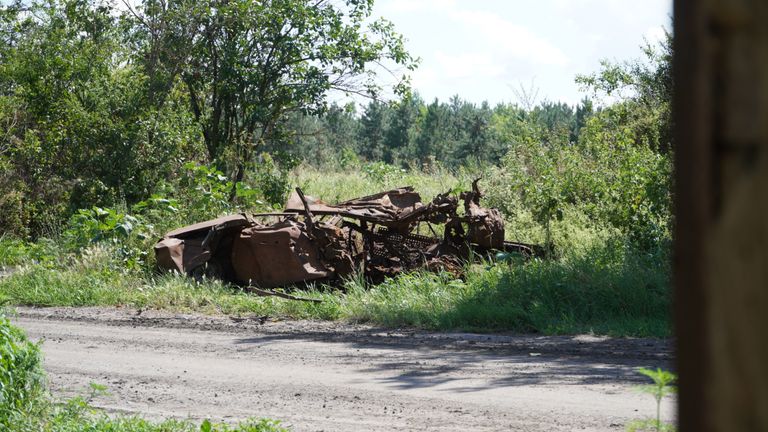In a moment of candour, the Ukrainian president, Volodymyr Zelensky said the counter-offensive has not gone exactly as planned.
“We must all understand very clearly, as clearly as possible, that Russian forces in our southern and eastern lands are doing everything they can in order to stop our soldiers.”
He was speaking in his nightly video address after meeting his commanders and suggested his forces were meeting determined resistance.
“And every thousand metres we advance, every success of every combat brigade deserves our gratitude,” he added.
Defence secretary to quit; Wagner troops cross border to Belarus – Ukraine latest
The fact that progress on the front is now measured in metres will come as a disappointment to many in the West – although experts say Ukraine has recaptured 253 square kilometres since 4 June.
It will also be greeted with sadness in communities up and down the front where residents are desperate to leave war behind.
We travelled to communities in the region of Zaporizhzhia that has been recently secured by the Ukrainians.
In the village of Storozheve the signs of war were impossible to ignore. The main street had been obliterated and farms and meadows have been repurposed by the military.
In a grassy ravine, we saw the members of an infantry unit learning how to fire rocket propelled grenades.
“Have you had a go?” said the commander. “Come,” he said, beckoning his troops.
Nearby we found a muddy clearing that had been turned into a garage for “automotive first aid”.
A team of grease-stained mechanics were working on a collection of vehicles that had been knocked out by Russian mines.
“The guys are working 24/7,” said Major Oleksii. “When something happens, we can fix it at any time.”
This open-air garage reflects new military realities as the Ukrainians try to push into enemy positions. The Russians have laid the world’s largest minefields, and armoured vehicles and tanks are taking the strain.
“Have the use of minefields changed the way that you use these vehicles?,” I asked Major Oleksii.
“Yes,” he replies. “It’s a pity to admit, but yes.
“They have mined this area extremely heavily. The Russians even blow themselves up. But it makes our operations much more difficult.”
Amid the wreckage, we found signs of everyday life, in the side-streets – and down by the river. A man used a net to fish from the bridge as artillery barrages boomed above him.
We heard the sound of voices behind a battered-looking gate and we asked if anyone was there.
Two neighbours appeared and introduced themselves. The younger of the two was called Nadezhda.
“What was it like when they were fighting for the village?,” I asked her.
“Well, constant shelling, constant shrapnel, glass and planks were flying around, and brick. Even asphalt flying in from the street and falling in the vegetable garden. There was a lot of everything.”
When asked why they stayed amid all the chaos, Alla, who hid in the cellar with her husband, said: “That’s because we were born here.”
“We stayed home. We are home.”
They told us that eight families had stayed through the worst of the fighting – a decision that reflects great courage. But their village lies in pieces and it may never be the same again.



